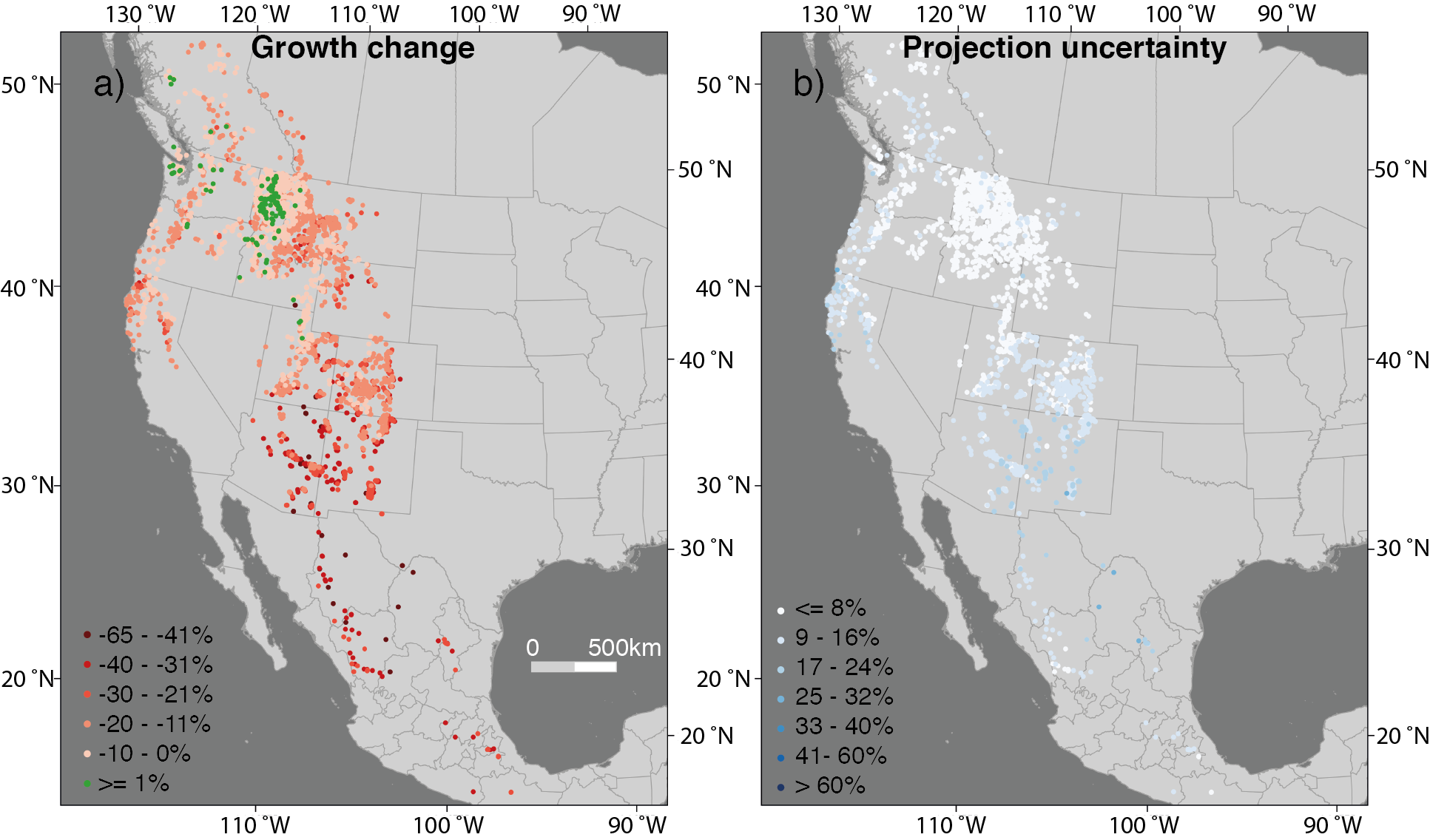Predicting how trees will grow in a radically changed world
Forests play an important role in the global carbon cycle. They are estimated to have removed somewhere between ¼ and ⅓ of the excess CO₂ added to the atmosphere through burning of fossil fuels and other human activities. Forests thus have been slowing climate change. Their future behavior, however, is associated with large uncertainties. Tree rings are being used to project future tree growth in response to climate change, relying on the same predictable relationships between tree growth and climate that have been used to reconstruct past climate variation. But how can the response of tree growth to past climate variation predict the future, when the future does not look like the past? Space-for-time substitution (SFTS) is one way to overcome this problem: a tree’s response at a given location in a warmer future is assumed to follow another tree’s response at a warmer location today. We tested SFTS by analyzing 30,000 tree-ring time series from 2,700 locations encompassing the geographic distribution of Douglas-fir. We found that average ring width and climate sensitivity are predictable based on average climatic conditions, confirming observations made by Hal Fritts more than 50 years ago: highest growth rates and weakest relative response to interannual climate variation in the mesic coastal part of Douglas-fir’s range vs. narrower rings combined with stronger climate sensitivity across the semi-arid interior part of its range.
We also discovered that ring-width response to spatial vs. temporal temperature variation was opposite in sign: while average growth rates were higher in (warm) Arizona compared to (cold) Montana, smaller-than-average rings are made in response to warmer-than-average temperatures in both places. This suggests that spatial variation in average growth rates, caused by local adaptation (different genotypes) and other slow processes (soil development), cannot be used to anticipate changes in productivity caused by rapid climate change. While these same slow processes may also influence spatial variation in climate sensitivity, we used SFTS as a best first guess as to how trees will react to future climate variability when temperatures are on average 1-3°C warmer – which we refer to as “partial” SFTS. Using this approach (SFTS of climate sensitivities), tree growth across much of Douglas-fir’s distribution was projected to decline, with largest relative decreases in the semiarid U.S. Interior West and smallest in the mesic Pacific Northwest. The more it warms, the less Douglas-fir – the most abundant tree in the lower 48 states of the U.S. (on a biomass basis) – will do to slow climate change.


